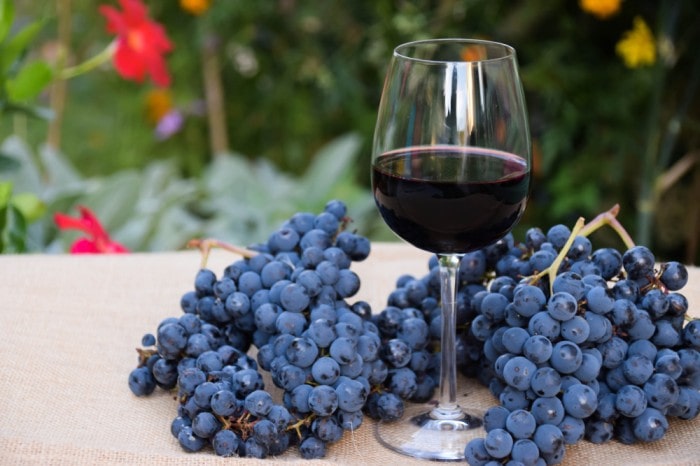
Admit it: one of the ways you sit back and relax after a long and tiring day at work is by popping a wine bottle open and pouring yourself a glass or two. This heart-healthy drink is a staple in the household of connoisseurs. There’s something about wines that makes you feel good and relaxed as soon as you drink it.
Many people have always loved wines, even during the ancient period of Egyptians, Greeks, and Romans. Eventually, people learned about its many benefits, such as reducing the risk of stroke and heart disease, and it soon became one of the world’s favorite drink.
Below, let’s have a look at some of the fascinating wine facts and figures and its history. Pour yourself a glass as you read this and absorb trivia you can share with your wine-loving loved ones.
Wine Consumption and Production Around the World
- In 2019, it was found that the United States consumed the largest volume of wine in the world at 33 million hectoliters, followed by France. (Statista)
- Italy, France, and Spain were the top wine-producing countries in the globe in 2019. (Statista)
- Vineyards took over roughly 7.4 million hectares of land in the world. (Statista)
- Greece is the ancient home of wine, and it remains as one of the oldest wine-producing countries in the world. (MoveHub)
- In 2017, Pakistan was found as the world’s most modest wine drinkers, with an average of 0.00011 bottles annually. Other countries that lack interest in wine are Iran, Bangladesh, Yemen, and North Korea. (MoveHub)
- The biggest wine spenders around the world live in Vatican City, Bermuda, Sint Maarten, Uruguay, and Namibia. (MoveHub)
History of Wine
- Hippocrates, the Father of Medicine, incorporated wine in his many remedies, including lower fevers and general antiseptic. (Gooseneck Vineyards)
- Osiris, the god of wine, was worshipped throughout ancient Egypt. The ancient Egyptians made at least 24 different kinds of wine. (Alcohol Problems and Solutions)
- The Hebrews were introduced to wine during their confinement in Egypt. (Alcohol Problems and Solutions)
- Sparkling champagne made its debut during the 17th century. England was the first country to produce sparkling wine. (Alcohol Problems and Solutions)
- In ancient Mediterranean culture, wine was a staple of life as opposed to a luxury. People of all ages and classes at the time consumed wine. (The Conversation)
Health Benefits of Wine
- Research has found that wine can boost the body’s bone mineral density, strengthening the bones. (Txanton)
- Red wine holds about 125 calories in a regular glass, while white wine is believed to contain roughly 82 calories. These are significantly less than beer (about 150 calories on average). (Fact City)
- Wine contains resveratrol, which acts as a thinner compound that helps prevent blood clots from happening and reduces the risk of stroke. (Txanton)
- Research shows that drinking red wine every night can increase the levels of good HDL cholesterol and produces a more beneficial cholesterol ratio than those who don’t. Additionally, it is found that people who consume either red or white wine experience better sleep quality. (Time)
- Moderate wine drinkers are 30% less likely than non-drinkers to develop type 2 diabetes. (Food & Wine)
- Research shows that men and women who consume two to seven glasses of wine weekly have less risk of being diagnosed with depression. (Lifehack)
- Studies found that moderate consumption of red wine can decrease the risk of developing colon cancer by about 50%. Meanwhile, men who drink an average of four to seven glasses weekly reduce their risk of prostate cancer by 52%. (Lifehack)
Other Interesting Facts
- The oldest preserved bottle of wine, the Römerwein or Speyer wine bottle, is housed in the Historical Museum of the Palatinate in Speyer, Germany. It was found during an excavation of a 4th century AD Roman nobleman’s tomb and dates back “between 325 and 359 AD.” (Abandoned Spaces)
- The Middle East is believed to be where the earliest vineyards developed. (Fact City)
- Intense fear, hatred, and irrational behavior when in close contact with wine is called “Oenophobia.” (The Taste)
- Wine tasters “swirl” the wine in the glass before drinking to help release its sensational and powerful aromas. Filling the wine glass no more than a third full helps prevent spilling when swirling. (Gooseneck Vineyards)
- There is more alcohol in mouthwash than wine. (The Taste)
- One bottle of wine contains about 1.27kg or 600 grapes. (Fact City)
The More You Know
From religious rituals to medicine to daily meals, wine has become a part of people’s lives, served and consumed in many ways. If you’re the type to eat healthy at home, a glass of your favorite wine from time to time wouldn’t add any guilt to your eating habits.
As you can see, wine even provides benefits for the body. The key to maximizing these is to drink in moderation—after all, too much of something is always bad.
About the Author:

Raichelle is a retail assistant manager at Txanton, Philippines. She obtained her Sommelier license with WSET2 by late 2018 and has been working in the hospitality industry over the past 10 years. She has developed special talent for dealing with every kind of clients and is one of the favorite by many fine wine and deli consumers. Her exceptional skills have driven her to the top and the truth is she actually has a real passion for premium gastronomy, beverage, and service.
